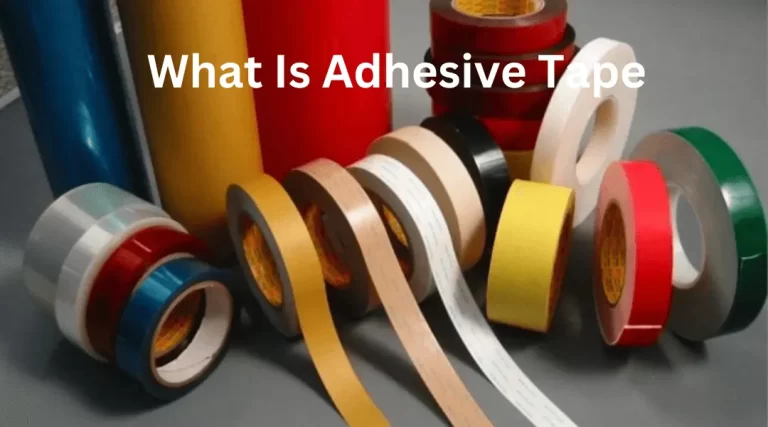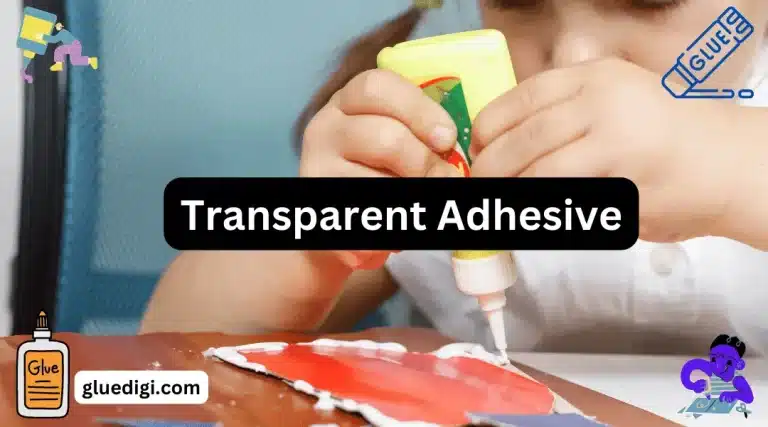Heavy-duty adhesive is a type of glue that is formulated to create a strong and long-lasting bond between two or more surfaces. It is designed to withstand extreme conditions, such as high temperatures, pressure, and moisture. Heavy-duty adhesives are widely used in various industries, including automotive, construction, aerospace, and manufacturing.
The use of heavy-duty adhesive has become increasingly popular due to its many advantages. It is a versatile bonding solution that can be used on a wide range of materials, including metal, wood, plastic, and rubber. Additionally, it offers a strong and durable bond that can withstand extreme stress and pressure, making it ideal for use in high-stress applications.
However, like any other adhesive, heavy-duty adhesive also has its drawbacks, which must be taken into consideration when selecting the appropriate adhesive for a particular application.
Overview of Heavy-Duty Adhesive
This section offers a broad introduction and overview of the adhesive that possesses exceptional strength and is primarily employed in industrial and construction applications.
Heavy-duty adhesive is a type of adhesive that can bond a variety of materials such as metal, plastic, wood, and rubber. It is known for its exceptional strength and durability, making it an ideal choice for applications that require a long-lasting and secure bond. One of the benefits of heavy-duty adhesive is its ability to withstand extreme temperatures, making it suitable for use in harsh environments. However, there are also drawbacks to using heavy-duty adhesive, such as its strong odor and the fact that it can be difficult to remove once it has been applied.
Application techniques for heavy-duty adhesive vary depending on the type of material being bonded and the specific adhesive being used. Some common techniques include spray application, brush application, and roll-on application.
The subsequent section will explore the different uses of heavy-duty adhesive in more detail.
Uses of Heavy-Duty Adhesive
Heavy-duty adhesive finds extensive use in commercial and industrial applications due to its high strength and durability.
It is also a popular choice for DIY projects and home repairs, as it can bond a wide range of materials.
Additionally, heavy-duty adhesive is suitable for outdoor and harsh environments, making it ideal for applications that require resistance to extreme temperatures, moisture, and chemicals.
Commercial and Industrial Applications
Commercial and industrial settings rely heavily on the utilization of powerful bonding agents due to the extreme conditions they often encounter, making the need for an adhesive with exceptional strength and durability all the more critical.
Industrial bonding requires adhesives that can withstand harsh environments, high temperatures, and heavy loads. Construction adhesives, for example, are used to bond materials such as concrete, wood, and metal, making them ideal for use in large-scale projects like building construction and infrastructure development.
Heavy-duty adhesive is also a popular choice for manufacturing processes where strong adhesion is needed to ensure the structural integrity of products. The automotive, aerospace, and marine industries are just some of the sectors that rely on heavy-duty adhesive for their products.
Overall, heavy-duty adhesive is an essential tool for industries that require strong and durable bonding agents to withstand the extreme conditions in which they operate.
In contrast, DIY projects and home repairs require an adhesive that is easy to use and does not require specialized equipment or expertise, making them suitable for use by non-professionals.
DIY Projects and Home Repairs
For those looking to tackle DIY projects or home repairs, selecting the right adhesive can be a crucial factor in ensuring a successful outcome.
Heavy-duty adhesives are particularly useful for DIY home decor and home improvement projects that require a strong bond. These adhesives can be used for a variety of applications, such as attaching tiles, repairing furniture, or securing shelves.
Heavy-duty adhesives come in different forms, including epoxy, polyurethane, and cyanoacrylate. While they offer a strong bond, heavy-duty adhesives can also have some drawbacks, such as a longer curing time, a strong smell, or the potential to damage surfaces if not used correctly. For these reasons, it is important to follow the instructions carefully and use the appropriate protective equipment.
Moving forward, outdoor and harsh environments require adhesives with specific properties that offer protection against moisture, temperature changes, and UV radiation.
Outdoor and Harsh Environments
What properties do adhesives need to have to withstand the demands of outdoor and harsh environments?
Outdoor adhesive applications and harsh environment adhesive solutions require adhesives that possess a set of specific properties. These properties include resistance to UV rays, water, and extreme temperatures, high strength and durability, and flexibility to withstand movement and vibration. Additionally, adhesives for outdoor and harsh environments must be able to bond with a variety of materials, including metals, plastics, and composites.
A good example of an adhesive that excels in outdoor and harsh environments is epoxy. It provides high strength and durability, resistance to water and chemicals, and can withstand a wide range of temperatures. However, it may not be the best choice for applications that require flexibility.
Overall, selecting the right adhesive for outdoor and harsh environments is crucial to ensure proper bonding and long-lasting results. In the next section, we will discuss the different types of heavy-duty adhesives available in the market.
Types of Heavy-Duty Adhesives
Heavy-duty adhesives come in various forms, including liquid, tape, and glue sticks. Each type of adhesive has its unique properties that make it suitable for specific applications.
Liquid adhesives are versatile and can bond different materials, while tape adhesives offer quick and easy application. Glue sticks are ideal for smaller projects and provide a strong hold.
Understanding the different types of heavy-duty adhesives can help users choose the right adhesive for their intended application.
Liquid
The liquid form of heavy-duty adhesive presents certain distinct characteristics that make it a viable option for various applications. Benefits of using liquid heavy-duty adhesive include its ability to spread evenly and penetrate deep into porous materials, creating a strong and durable bond.
Liquid adhesive is also versatile and can be used on a wide range of surfaces, including metal, plastic, wood, and rubber. However, drawbacks of this adhesive variant include its longer curing time and the potential for messiness during application. To ensure proper application, it is recommended to apply the adhesive in thin layers and allow sufficient time for it to dry.
Additionally, it is important to use proper safety equipment, such as gloves and eye protection, when handling liquid adhesive. In the next section, we will explore the use of heavy-duty tape as another option for bonding materials.
Tape
While liquid adhesives offer a strong bond, sometimes it’s more convenient to use tape alternatives.
Heavy-duty tape is a popular choice for its ease of use, portability, and versatility. It can be used to join different types of materials, including paper, plastic, and metal.
However, it’s worth noting that tape may not be as strong as adhesive in some cases. The adhesive on tape may also wear off over time, leading to a weaker bond.
When deciding between tape and adhesive, it’s essential to consider the specific use case and material requirements.
In the next section, we’ll explore another type of heavy-duty adhesive: glue sticks.
Glue Sticks
Glue sticks are a commonly used alternative to liquid adhesives and tape, with a market size projected to reach $3.6 billion by 2026. They are easy to use, mess-free, and come in a variety of sizes and strengths suitable for different applications.
Glue sticks are ideal for light-duty projects such as scrapbooking, paper crafts, and school projects. However, when it comes to heavy-duty projects, glue sticks have some drawbacks. They are not as strong as liquid adhesives or tape, and may not hold up well in extreme temperatures or moisture. Additionally, glue sticks may not be suitable for bonding certain materials such as metal or plastic.
In comparison to other adhesive forms, glue sticks are more convenient and portable, making them a popular choice for on-the-go crafting and minor repairs. Overall, while glue sticks have their benefits, they may not be the best option for heavy-duty projects.
Moving onto the advantages of heavy-duty adhesive, it is important to consider the strength and durability required for these types of projects.
Advantages of Heavy-Duty Adhesive
The advantages of heavy-duty adhesive can be likened to the strength of a sturdy oak tree trunk, providing reliable and long-lasting bonding capabilities for a variety of applications.
This type of adhesive offers unparalleled advantages, including exceptional strength, durability, and versatility. Its bonding capabilities are unmatched, making it the ideal choice for industrial, construction, and automotive applications.
The adhesive is resistant to high temperatures, chemicals, and moisture, making it ideal for use in harsh environments. Additionally, heavy-duty adhesive is easy to apply, and it dries quickly, reducing the time required for bonding.
The adhesive’s versatility and adaptability make it suitable for use on a wide range of surfaces, including metal, plastic, wood, and rubber. This type of adhesive also offers excellent resistance to impact and vibration, making it an ideal choice for heavy-duty applications.
In summary, heavy-duty adhesive offers a range of advantages that make it an attractive choice for professionals in various industries. However, despite its many benefits, this type of adhesive has its drawbacks, which will be discussed in the subsequent section.
Disadvantages of Heavy-Duty Adhesive
Although heavy-duty adhesive offers numerous advantages, it also has its share of disadvantages that should be taken into consideration.
One of the main potential hazards of using this type of adhesive is that it can emit harmful fumes that can cause respiratory problems, particularly if used in an enclosed or poorly ventilated area.
Additionally, some heavy-duty adhesives can be difficult to remove once they are set, which could result in damage to the surfaces they are applied on.
Furthermore, heavy-duty adhesives often require special handling and storage to ensure their effectiveness, which could increase the overall cost of the project.
It is important to carefully assess the risks and benefits of using heavy-duty adhesive before deciding to use it.
With that said, if used correctly, heavy-duty adhesive can be an effective solution for a wide range of applications.
To learn more about how to use heavy-duty adhesive, read on to the subsequent section.
How to Use Heavy-Duty Adhesive
In order to effectively utilize a high-strength bonding agent, proper preparation of the surfaces to be joined, careful application of the adhesive, and sufficient curing time are critical factors to ensure a successful outcome.
Before applying any heavy-duty adhesive, it is important to thoroughly clean and dry the surfaces, removing any dirt, grease, or oil that may interfere with the bond. Safety precautions should also be taken, such as wearing gloves and eye protection, as some adhesives contain harmful chemicals.
Common mistakes to avoid include using too much adhesive, applying it unevenly, or not allowing enough curing time. Best practices for application include using a uniform layer of adhesive, applying pressure to the surfaces being joined, and allowing sufficient time for curing before use.
By following these guidelines, the bond created by the adhesive will be stronger and more reliable. Choosing the right heavy-duty adhesive is also important, as different adhesives are designed for different materials and applications.
Choosing the Right Heavy-Duty Adhesive
When it comes to choosing the right heavy-duty adhesive, there are several key considerations to keep in mind.
One crucial factor is the materials and environments in which the adhesive will be used, as different adhesives may be better suited for certain types of materials or conditions.
Comparing brands and formulations can also be helpful in determining which adhesive will best meet your needs, as some brands may offer stronger or more versatile options than others.
To make the best choice, it’s important to keep these factors in mind and do your research to ensure that you select an adhesive that will provide the durability and performance you require.
Considerations for Materials and Environments
An assessment of the suitability of various materials and environments is necessary in order to determine the optimal conditions for the effective utilization of the adhesive.
Materials compatibility should be considered when selecting a heavy-duty adhesive to ensure that it will properly bond with the substrate it is being applied to.
Temperature resistance is also an important factor, as certain adhesives may not hold up under extreme heat or cold.
Additionally, environmental factors such as humidity and exposure to chemicals should be taken into account.
By carefully considering the materials and environments in which the adhesive will be used, one can select the most appropriate adhesive for their specific needs.
This will help ensure that the adhesive will perform effectively and provide a strong and lasting bond.
Comparing brands and formulations is the next step in finding the best heavy-duty adhesive for the job.
Comparing Brands and Formulations
When considering materials and environments, it is important to keep in mind that not all heavy-duty adhesives are created equal. Brand comparison and formulation analysis are essential in determining which adhesive will best suit your needs.
Factors such as bonding strength, curing time, and resistance to temperature and moisture should be taken into account when comparing brands. Formulation analysis can also reveal if a specific adhesive is best suited for certain materials or environments.
By analyzing the pros and cons of each brand and formulation, you can make an informed decision on which adhesive will provide the best results for your project. With this in mind, it is important to consider additional tips for making the best choice.
Tips for Making the Best Choice
Just as a carpenter carefully selects the right tool for a job, a thorough evaluation of brand comparison and formulation analysis, coupled with an understanding of key factors such as bonding strength, curing time, and environmental resistance, are critical in selecting the optimal adhesive for any project.
Factors to consider when making a choice include the type of materials being bonded, the amount of stress the bond will endure, and the conditions the bond will be exposed to.
Expert recommendations suggest that it is important to choose an adhesive with a bonding strength that matches the load-bearing capacity of the materials being bonded.
Similarly, curing time should be taken into account, as some adhesives can take hours or even days to fully set.
Finally, environmental resistance should be considered, as some adhesives may break down when exposed to moisture, heat, or other environmental factors.
By taking these factors into consideration, one can make an informed decision and choose the best heavy-duty adhesive for their project.
Conclusion
Heavy-duty adhesives are highly effective and versatile products that are commonly used in various industries. These adhesives are designed to provide strong and long-lasting bonding between different surfaces, materials, and objects. They are characterized by their ability to withstand extreme conditions of pressure, temperature, and moisture, making them ideal for use in heavy-duty applications.
There are several types of heavy-duty adhesives available in the market, each with its unique properties and applications. Some of the most common types include epoxy, cyanoacrylate, polyurethane, and silicone adhesives. Each of these adhesives has its strengths and weaknesses, and it is important to choose the right type depending on the specific application requirements.
Heavy-duty adhesives offer several advantages over other types of bonding methods, including their ability to bond a wide range of materials, their high strength and durability, and their resistance to environmental factors such as heat, moisture, and chemicals. However, they also have some disadvantages, such as their relatively high cost, the need for proper safety precautions during handling, and the potential for damage to surfaces if not used correctly.
In conclusion, heavy-duty adhesives are essential products in various industries, offering strong and long-lasting bonding solutions for a wide range of materials and surfaces. By understanding the different types of heavy-duty adhesives available and their respective advantages and disadvantages, users can make informed decisions when choosing the right adhesive for their specific application. Proper handling and application of heavy-duty adhesives can ensure optimal performance and reliability, making them an essential tool for professionals in various fields.




